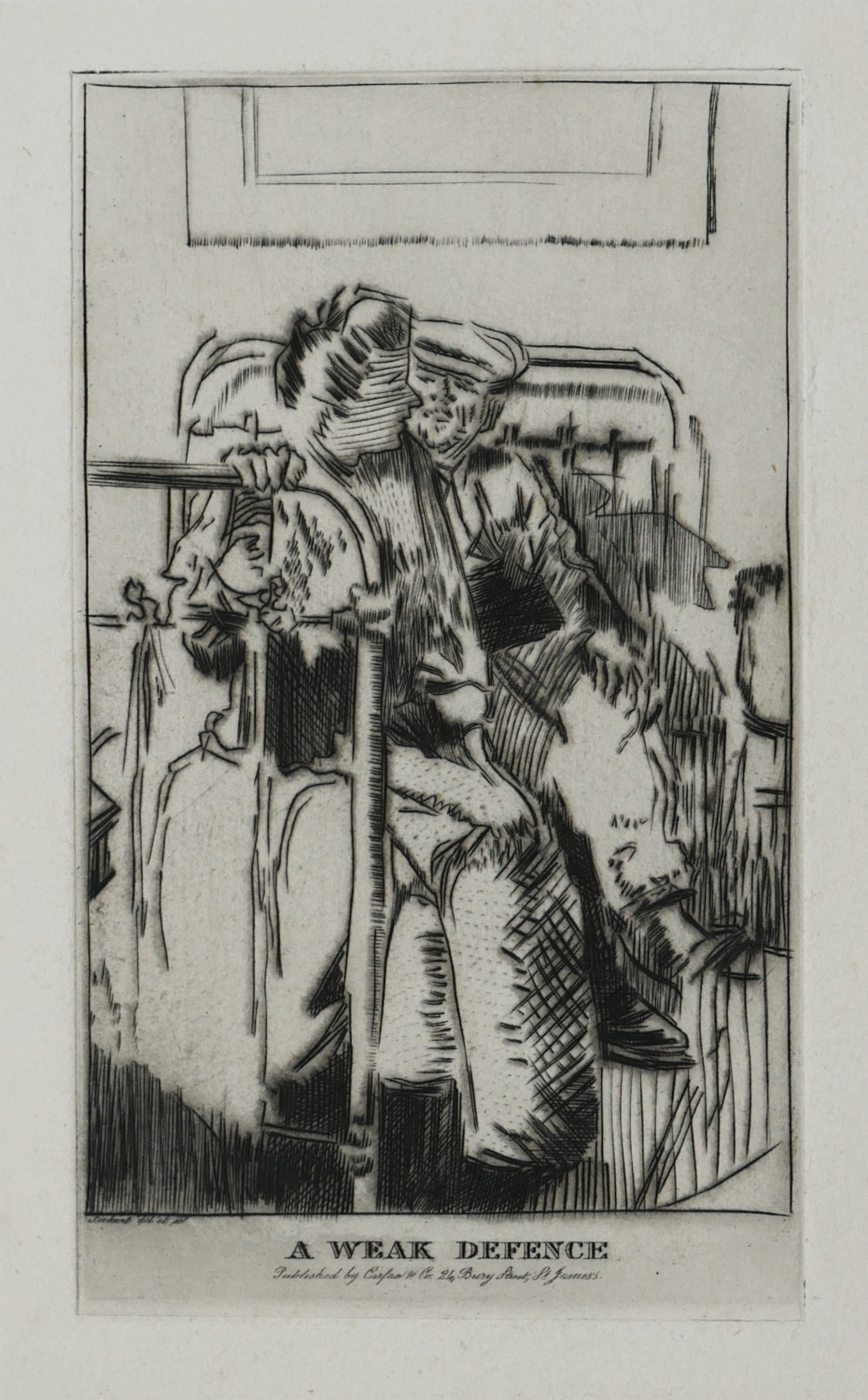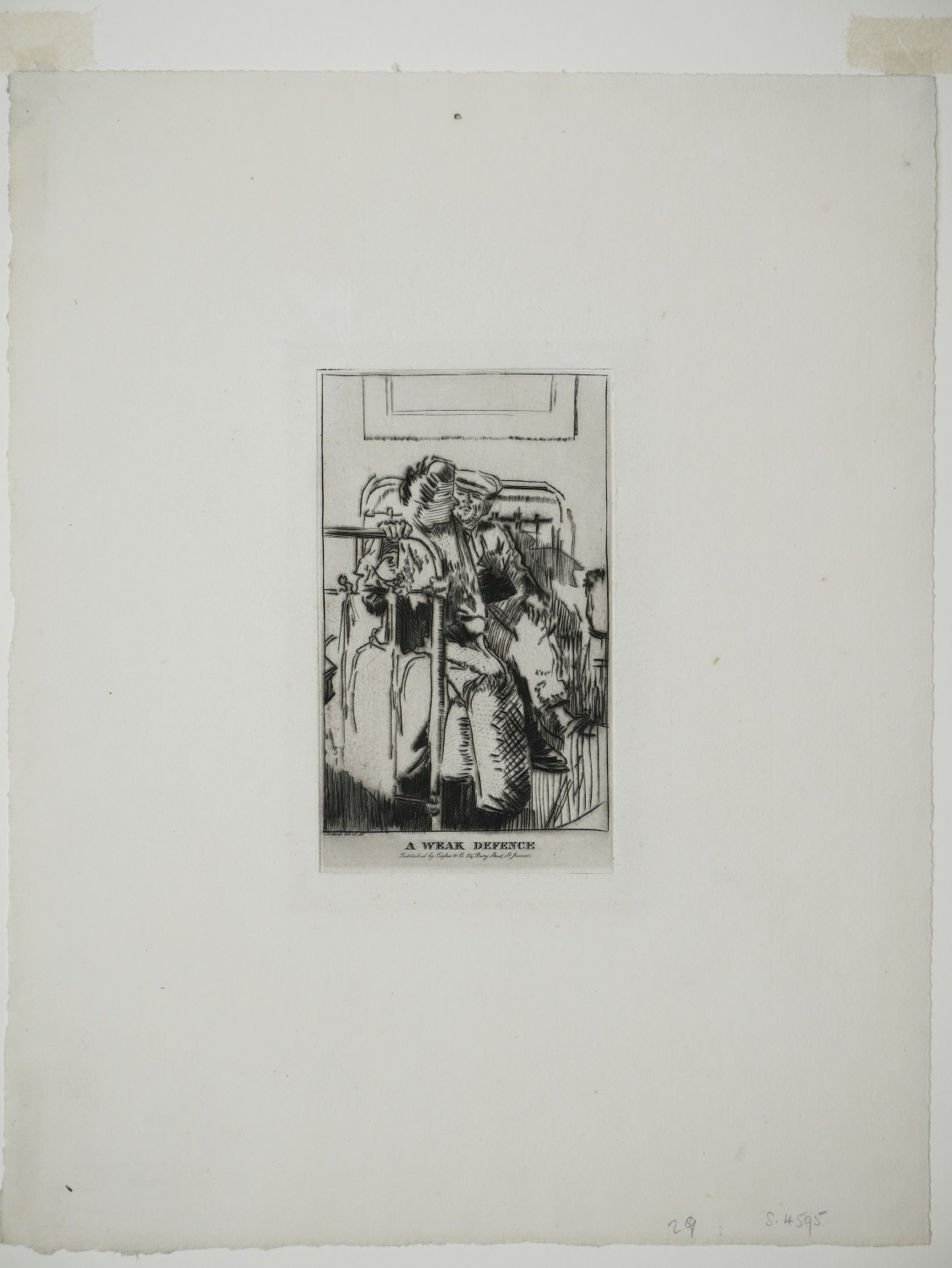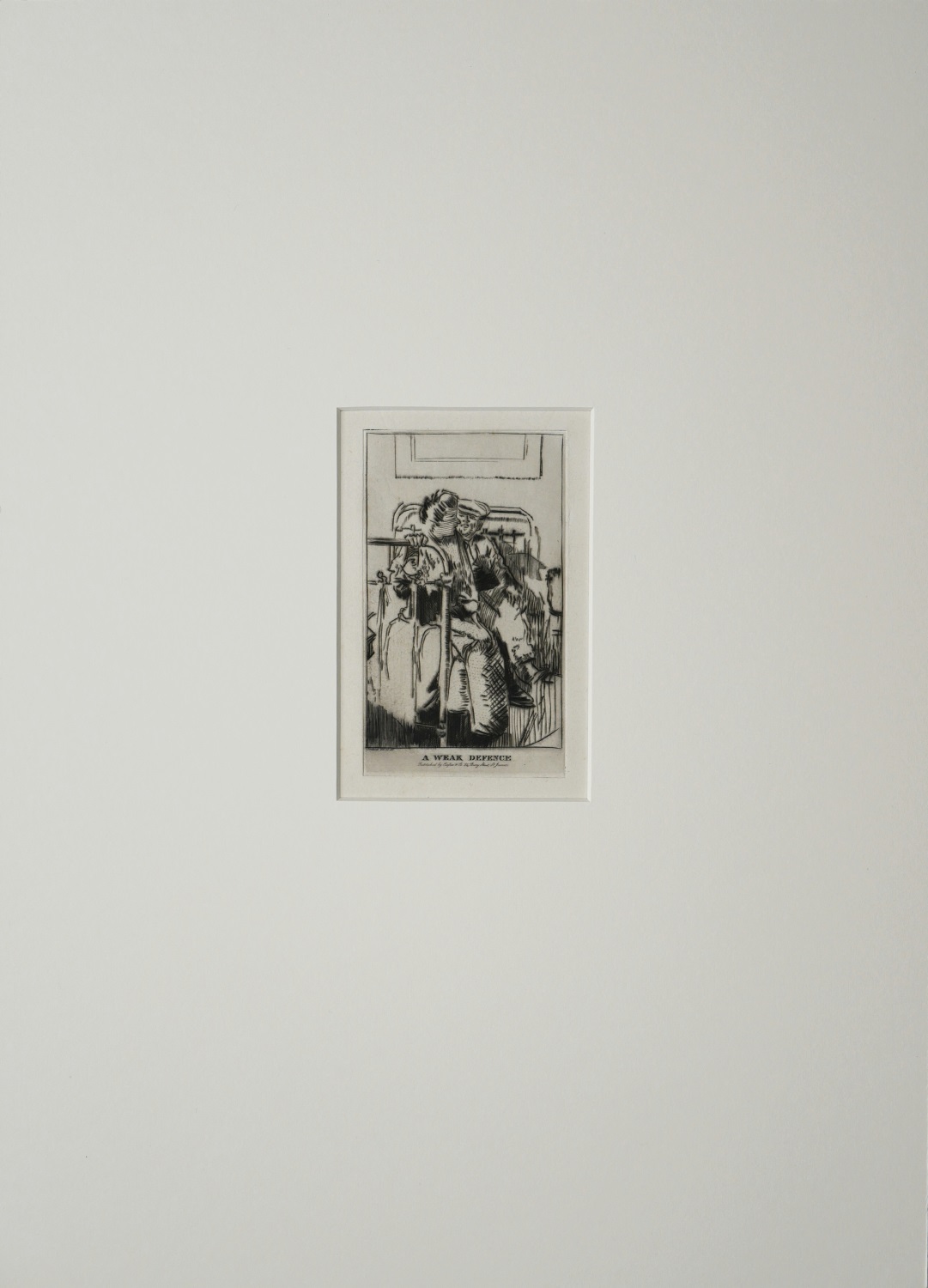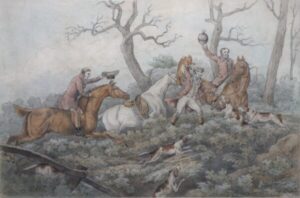Sickert, Walter Richard (1860-1942)
Sickert was the son of Oswald Adalbert Sickert, a Danish-born German draftsman who settled in England in 1868. After several years working as an actor, in 1881 the younger Sickert attended the Slade School of Art in London. In 1882 he became an assistant to James McNeill Whistler, and the following year he met the French Impressionist Edgar Degas in Paris; these artists greatly influenced his work. In particular, Sickert was indebted to Degas for the ability to establish a situation merely through the attitudes of his figures. His first pictures of London music-hall interiors, which became one of his most typical subjects, appeared in 1888 at the New English Art Club. Such works helped introduce Impressionism’s subject matter of everyday life to the British public. After making a living as a portrait painter throughout the 1890s, from 1898 to 1905 Sickert lived in Dieppe, France, and in Venice, often painting landscapes.
In 1905 Sickert returned to London, where he joined the painters Augustus John and Lucien Pissarro, the son of Impressionist master Camille Pissarro, in advocating advanced ideas in British painting. During the latter part of the decade he began to depict disturbing subject matter, such as a series of chilling, ambiguous works entitled Camden Town Murder. By 1911 Sickert became the leader of the Camden Town Group, an association of artists who advocated an unromanticised vision of the urban scene; the rough quality of the group’s aesthetic is apparent in paintings by Sickert such as Ennui (c. 1913). The group also organized exhibitions of French and British Impressionism and Post-Impressionism that exposed the British public to important developments in European avant-garde art.
From the mid-1920s to the end of his life, Sickert lived in a variety of locales, including Dieppe and, in England, Bath and Kent. In his later work he increasingly used photographs, rather than live models, as the basis for his work. He also occasionally wrote art criticism for the leading journals of the day.





